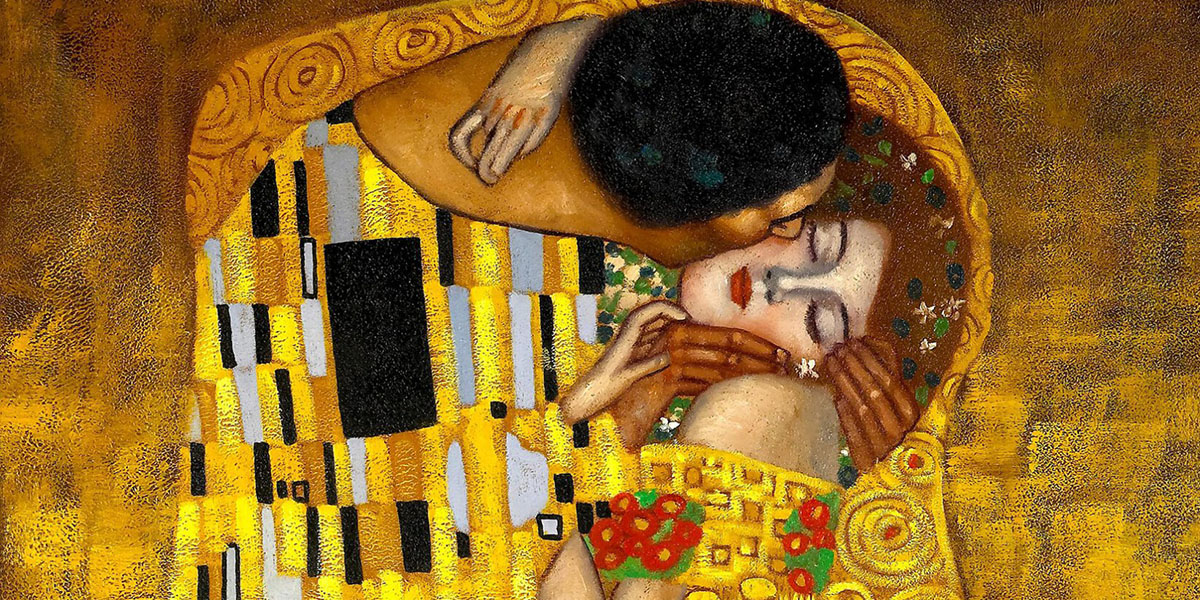
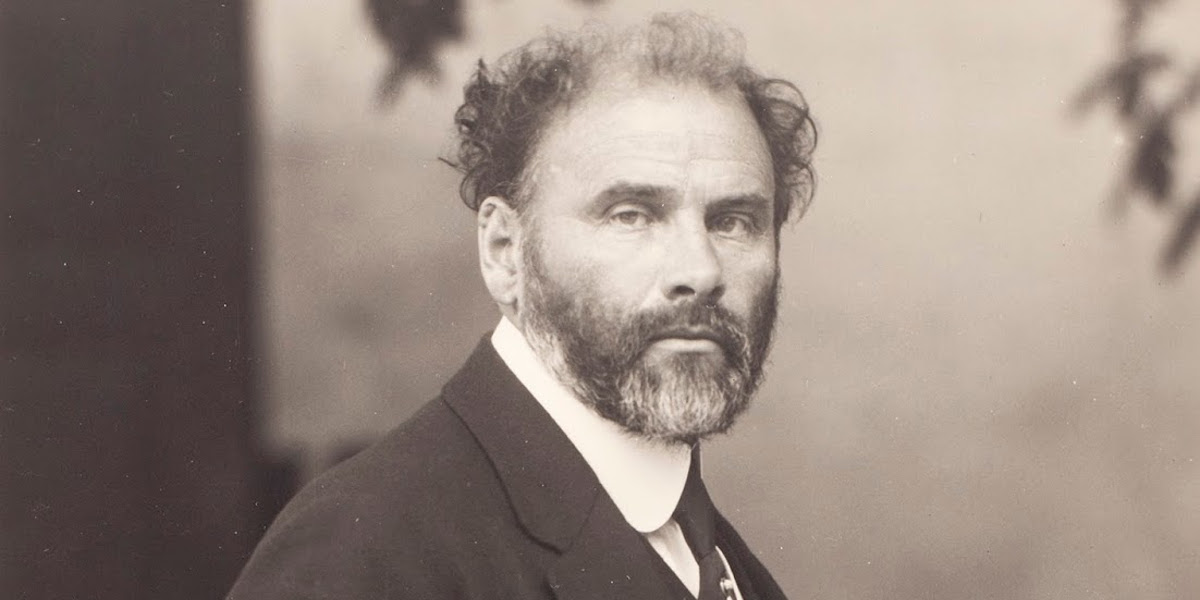
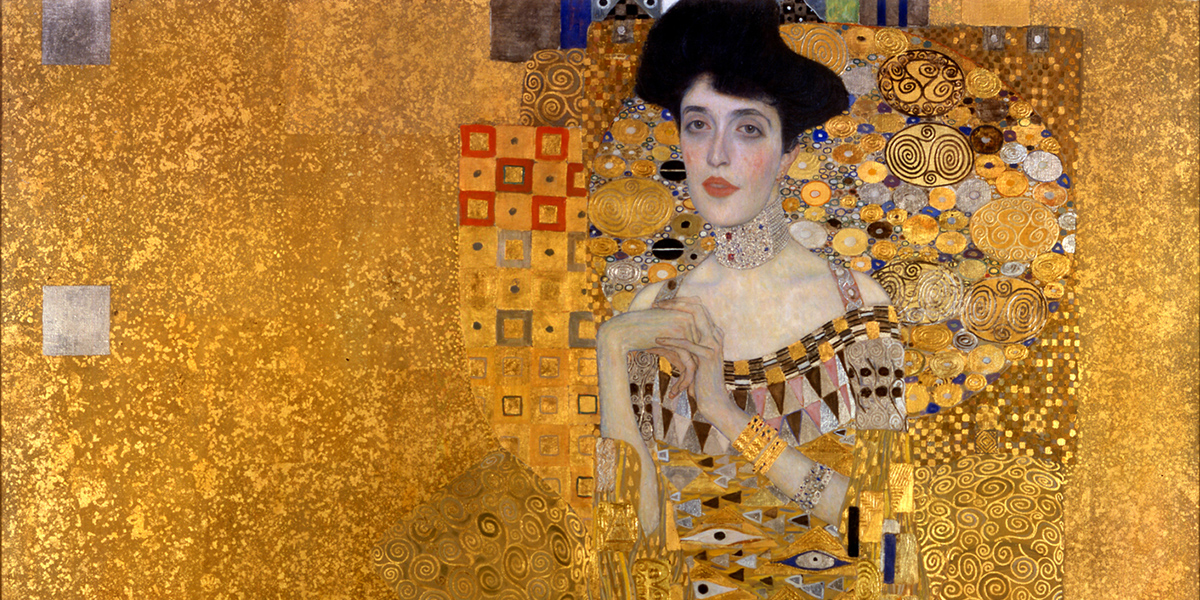
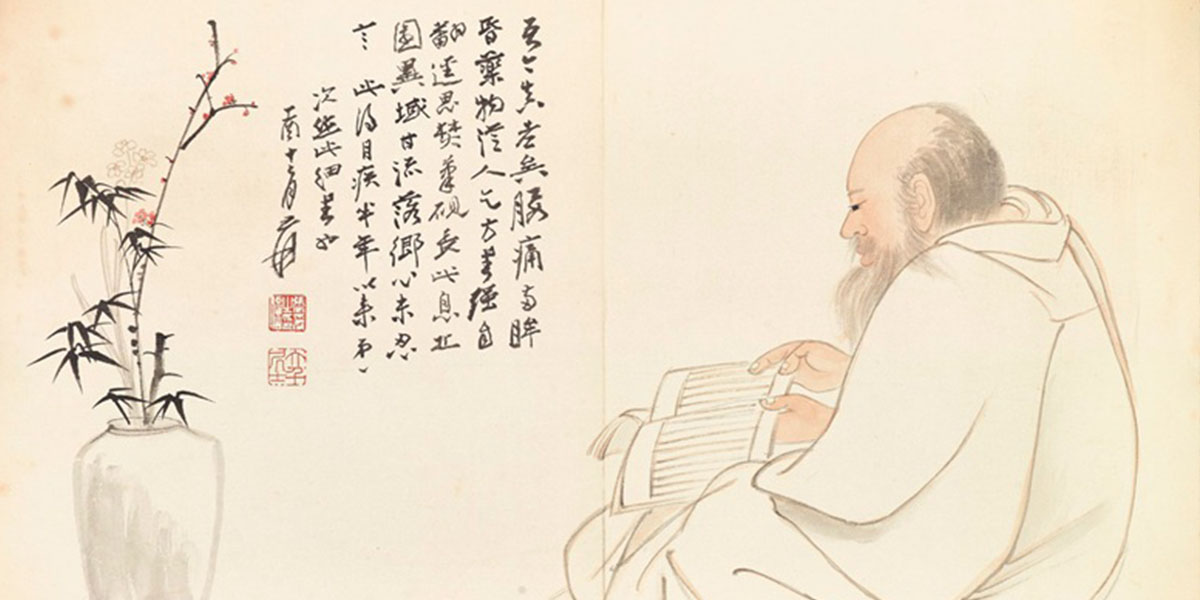
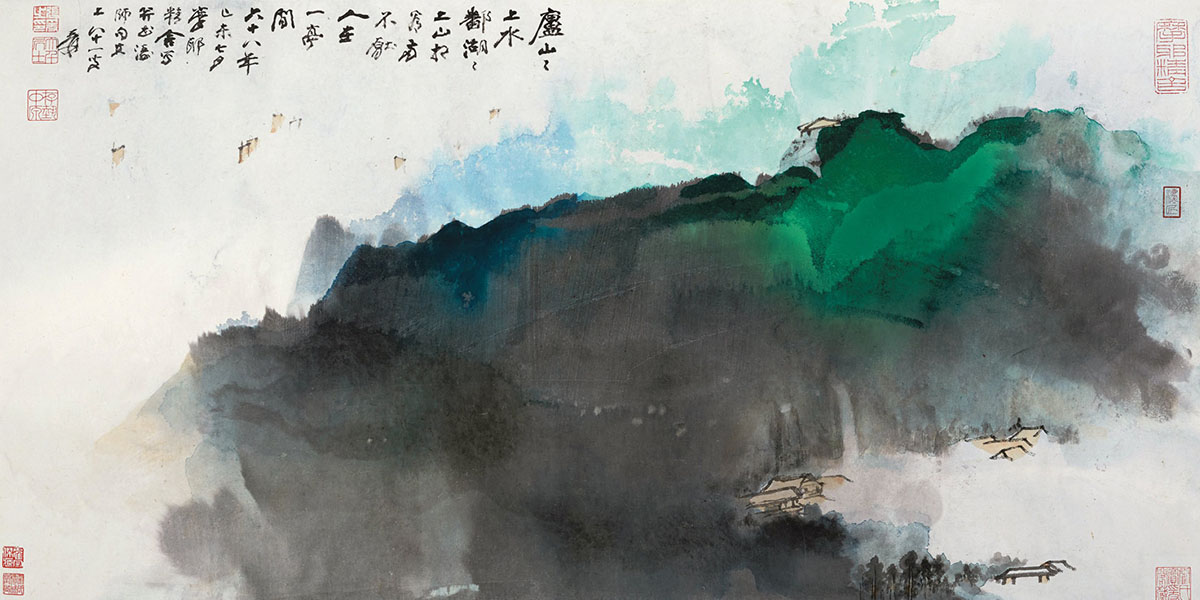
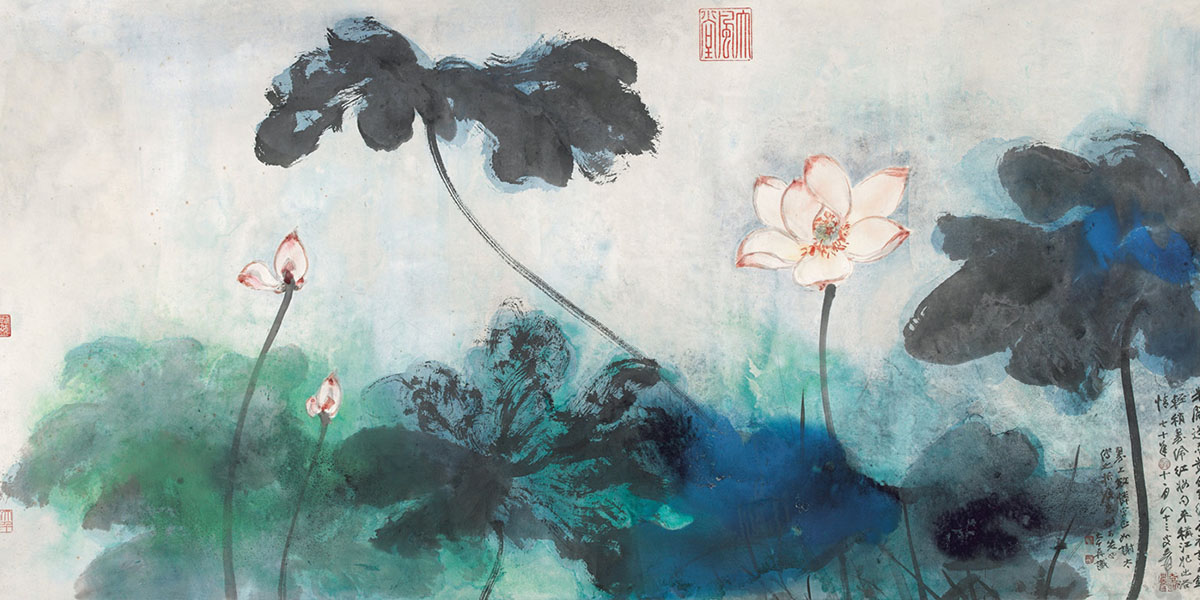

Gustav Klimt was born in Baumgarten, near Vienna in Austria-Hungary, the second of seven children—three boys and four girls. His mother, Anna Klimt (née Finster), had an unrealized ambition to be a musical performer. His father, Ernst Klimt the Elder, formerly from Bohemia, was a gold engraver.
All three of their sons displayed artistic talent early on. Klimt's younger brothers were Ernst Klimt and Georg Klimt. Applied Arts Vienna, where he studied architectural painting from 1876 until 1883. He revered Vienna's foremost history painter of the time, Hans Makart. Klimt readily accepted the principles of a conservative training; his early work may be classified as academic.In 1877 his brother, Ernst, who, like his father, would become an engraver, also enrolled in the school. The two brothers and their friend, Franz Matsch, began working together and by 1880 they had received numerous commissions as a team that they called the "Company of Artists". They also helped their teacher in painting murals in the Kunsthistorisches Museum in Vienna. Klimt began his professional career painting interior murals and ceilings in large public buildings on the Ringstraße, including a successful series of "Allegories and Emblems".
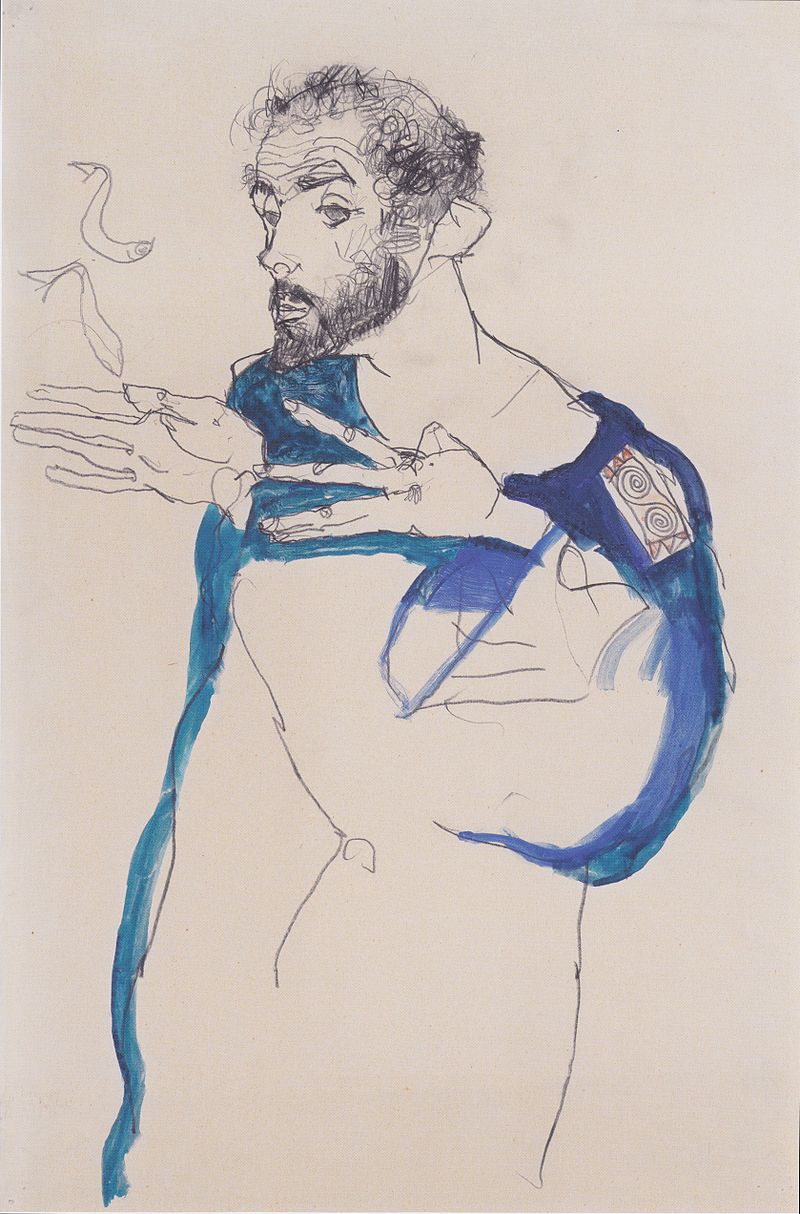
Klimt became one of the founding members and president of the Wiener Sezession (Vienna Secession) in 1897 and of the group's periodical, Ver Sacrum ("Sacred Spring"). He remained with the Secession until 1908. The goals of the group were to provide exhibitions for unconventional young artists, to bring the works of the best foreign artists to Vienna, and to publish its own magazine to showcase the work of members. The group declared no manifesto and did not set out to encourage any particular style—Naturalists, Realists, and Symbolists all coexisted. The government supported their efforts and gave them a lease on public land to erect an exhibition hall. The group's symbol was Pallas Athena, the Greek goddess of just causes, wisdom, and the arts—of whom Klimt painted his radical version in 1898.
In 1894, Klimt was commissioned to create three paintings to decorate the ceiling of the Great Hall of the University of Vienna. Not completed until the turn of the century, his three paintings, Philosophy, Medicine, and Jurisprudence were criticized for their radical themes and material, and were called "pornographic". Klimt had transformed traditional allegory and symbolism into a new language that was more overtly sexual and hence more disturbing to some.The public outcry came from all quarters—political, aesthetic and religious. As a result, the paintings (seen in gallery below) were not displayed on the ceiling of the Great Hall. This would be the last public commission accepted by the artist.

Klimt's 'Golden Phase' was marked by positive critical reaction and financial success. Many of his paintings from this period included gold leaf. Klimt had previously used gold in his Pallas Athene (1898) and Judith I (1901), although the works most popularly associated with this period are the Portrait of Adele Bloch-Bauer I (1907) and The Kiss (1907–08).
Klimt travelled little, but trips to Venice and Ravenna, both famous for their beautiful mosaics, most likely inspired his gold technique and his Byzantine imagery. In 1904, he collaborated with other artists on the lavish Palais Stoclet, the home of a wealthy Belgian industrialist that was one of the grandest monuments of the Art Nouveau age. Klimt's contributions to the dining room, including both Fulfillment and Expectation, were some of his finest decorative works, and as he publicly stated, "probably the ultimate stage of my development of ornament."
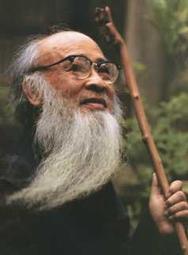
Zhang was born in 1899 in Sichuan Province to a financially struggling but artistic family. His first commission came at age 12, when a traveling fortune-teller requested he paint her a new set of divining cards. At age 17 he was captured by bandits while returning home from boarding school in Chongqing. When the bandit chief ordered him to write a letter home demanding a ransom, he was so impressed by the boy's brushmanship that he made the boy his personal secretary. During the more than three months that he was held captive, he read books of poetry which the bandits had looted from raided homes.
As a young adult Zhang moved to Kyoto to learn textile dyeing techniques. He later returned to Shanghai and established a successful career selling his paintings. The governor of Qinghai, Ma Bufang, sent Zhang to Sku'bum to seek helpers for analyzing and copying Dunhuang's Buddhist art.
Due to the political climate of China in 1949, he left the country and resided in Mendoza, Argentina, São Paulo and Mogi das Cruzes, Brazil, and then to Carmel, California, before settling in Taipei, Taiwan in 1978. During his years of wandering he had several wives simultaneously, curried favor with influential people, and maintained a large entourage of relatives and supporters. He also kept a pet gibbon. He affected the long robe and long beard of a scholar.
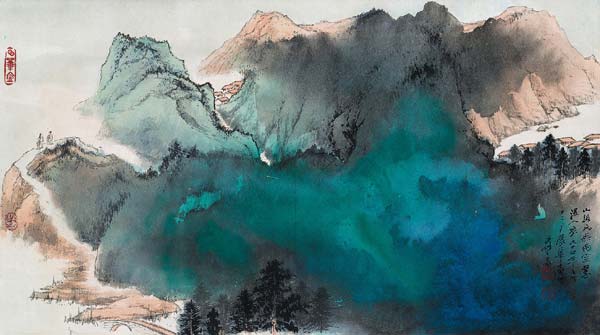
In 1917 his elder brother, Zhang Shanzi (an artist famous for his tiger paintings), accompanied him to Kyoto, Japan, to study textile dyeing. Two years later, Zhang Daqian went to Shanghai to receive traditional painting instruction from two famous calligraphers and painters of the time, Zeng Xi and Li Ruiqing. Through his association with these teachers, Zhang had the opportunity to study some works by ancient masters in detail. His early style attempted to emulate the Ming-Qing Individualists, including Tang Yin, Chen Hongshou, and Shitao. He meticulously studied and copied their works and began to make forgeries; he gained notoriety when one of his forged Shitaos successfully deceived the connoisseurs.
After his early success in Shanghai, Zhang extended his career to the north in the late 1920s, when he became active in the cultural circles of Beijing. He began to collaborate with the well-known Beijing painter Pu Xinyu, and together they became known as the “South Zhang and North Pu,” an epithet that is still used to refer to their collaborative works of the 1930s.
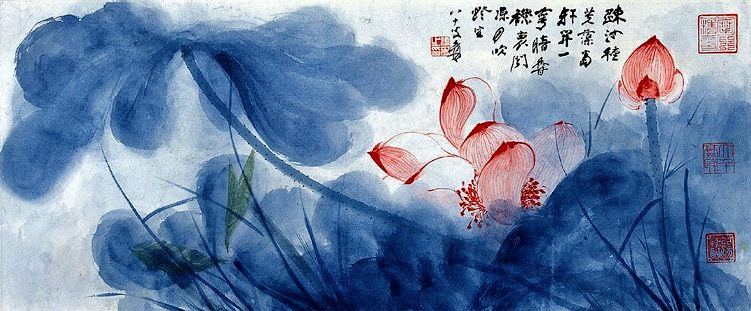
Zhang Daqian’s oeuvre is noteworthy for the many painting styles that he mastered, from highly meticulous and detailed portraits to bold and expressive splashed-ink landscapes. While he was highly innovative as he developed his own unique style, he always insisted that his art was firmly rooted in Chinese tradition. As is usually the case with ink artists, his later works, especially his vibrant splashed-ink landscapes, are the most sought after.
&
Daqian Zhang